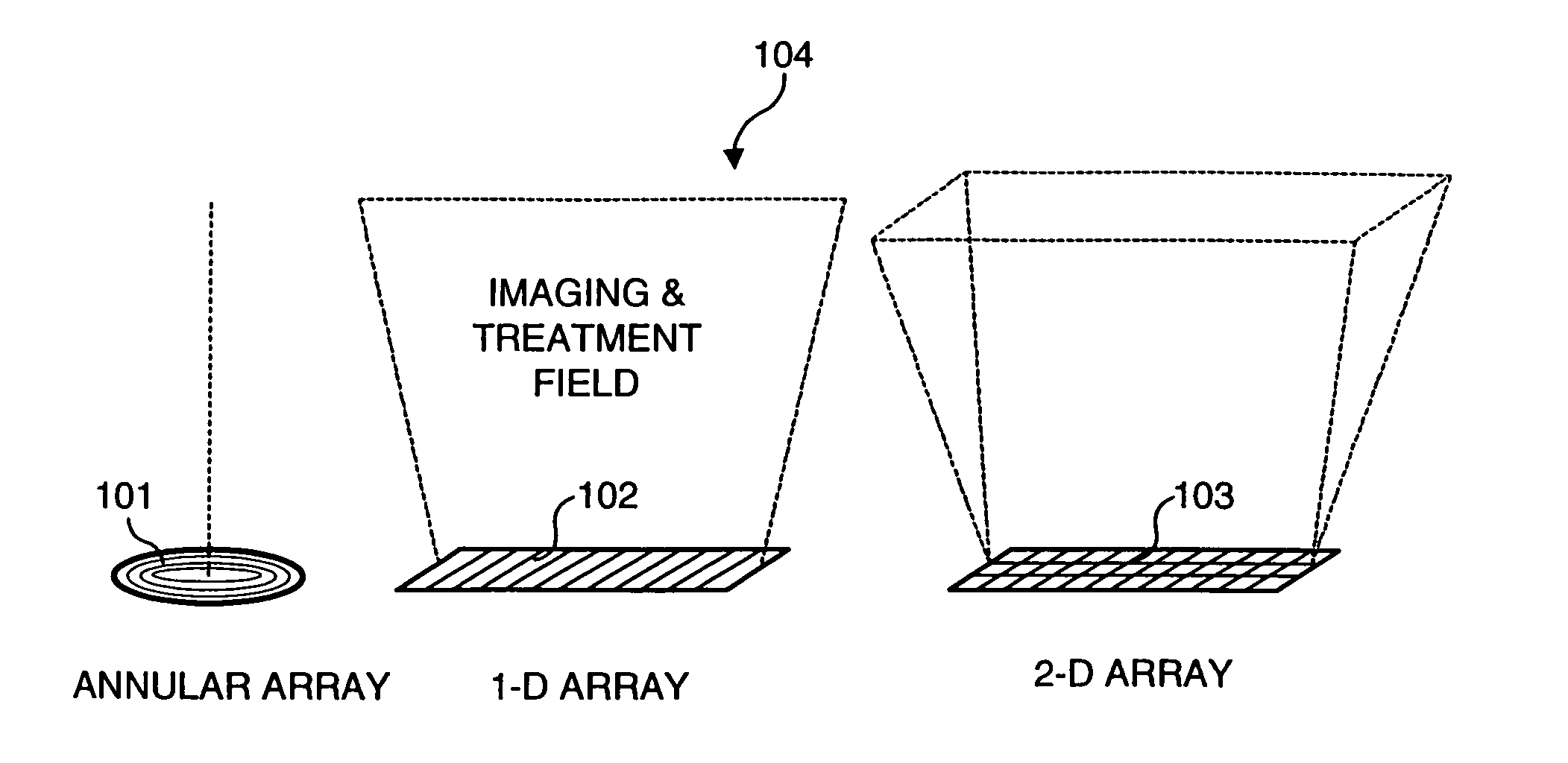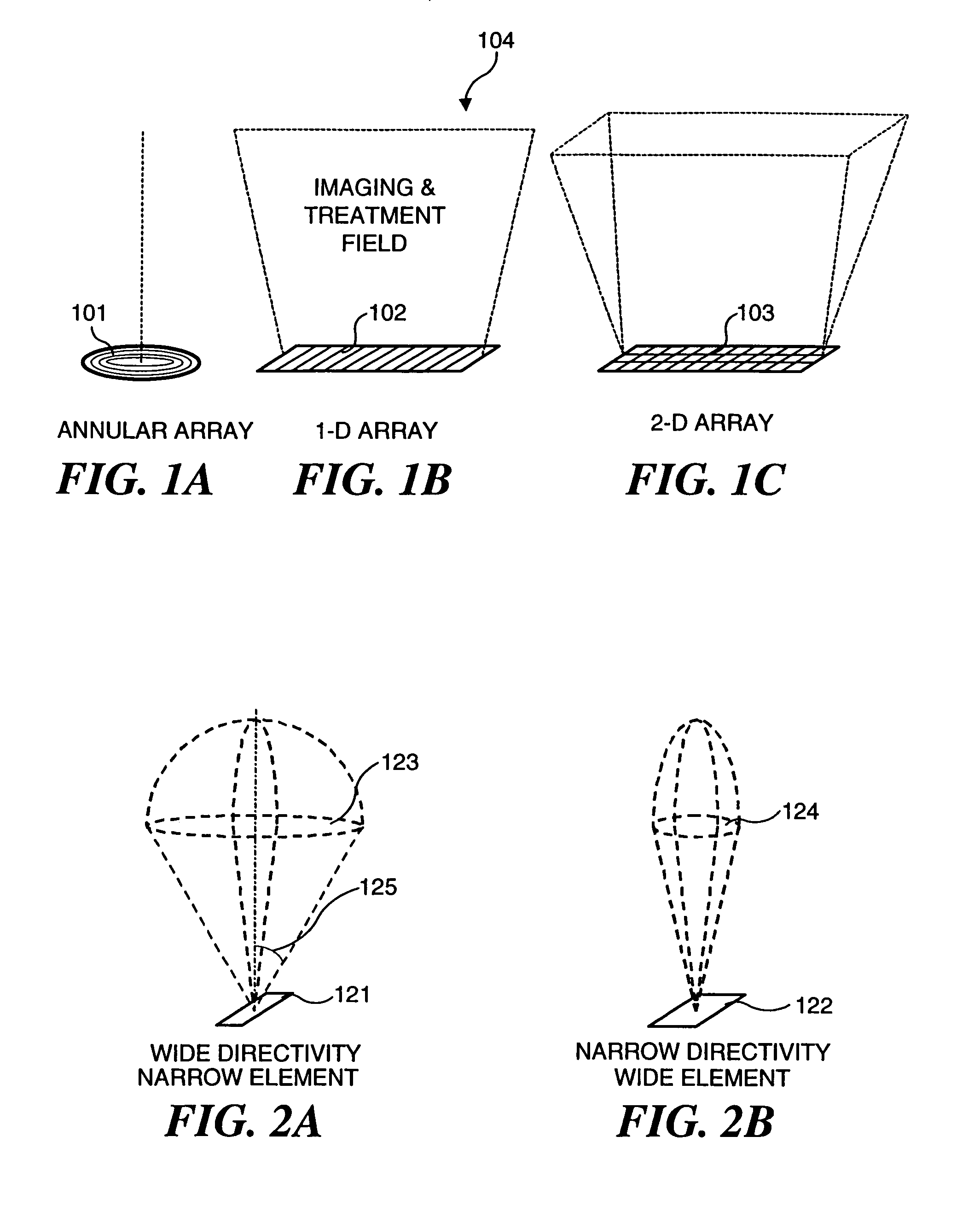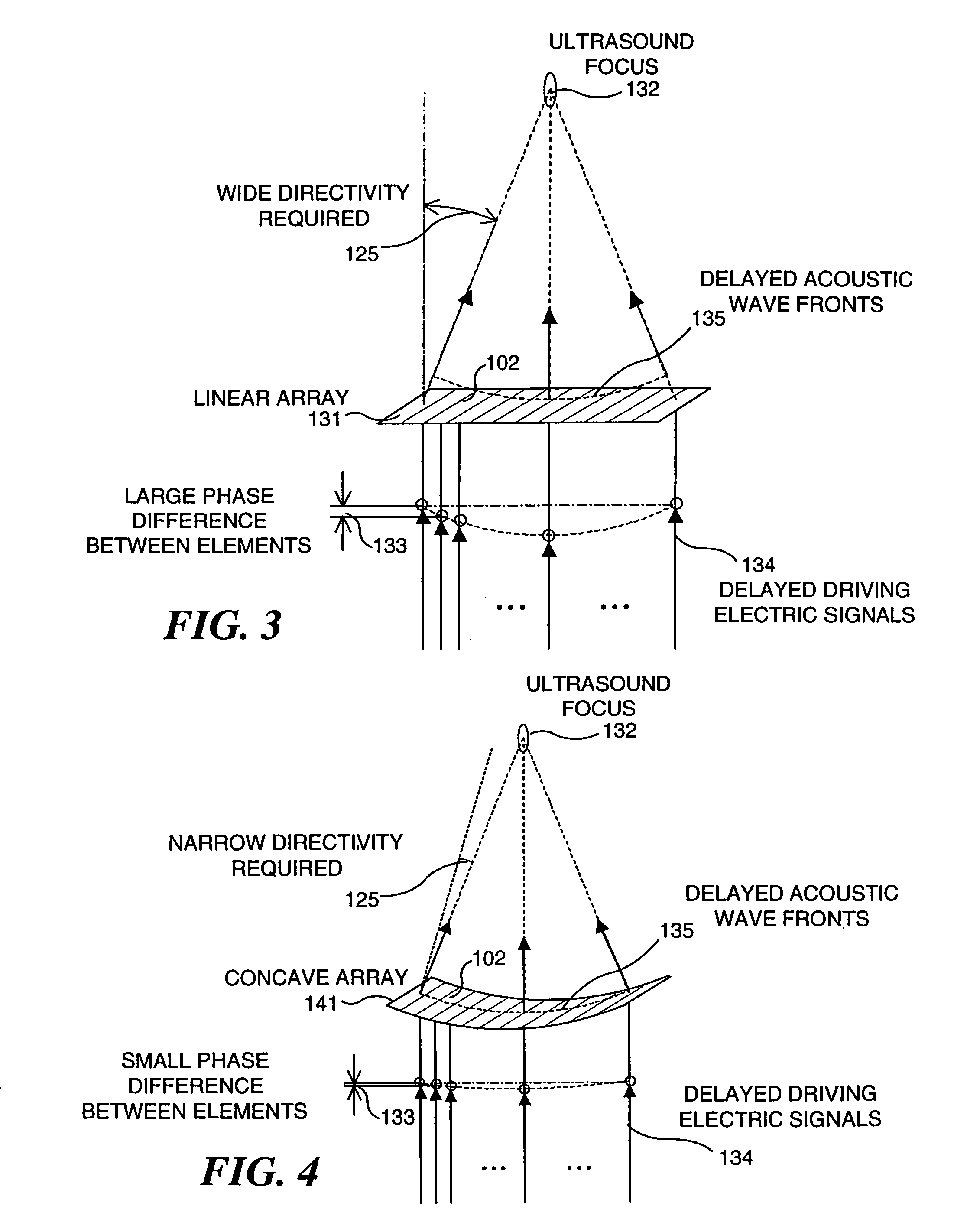Ultrasound transducers for imaging and therapy
a transducer and ultrasound technology, applied in the field of ultrasound for imaging and therapeutic purposes, can solve the problems of difficult to meet the desire for high efficiency during ultrasound therapy, difficult to meet the desire for broad bandwidth during ultrasound imaging, and the same transducer design, so as to improve the likelihood, improve the bonding strength, and widen the imaging and treatment field
- Summary
- Abstract
- Description
- Claims
- Application Information
AI Technical Summary
Benefits of technology
Problems solved by technology
Method used
Image
Examples
Embodiment Construction
[0046]An ultrasound array includes many small transducer elements on its aperture surface, and these transducer elements can be distributed in several different geometric arrangements, as shown in FIGS. 1A–1C. Each transducer element is independently driven by its own electronic circuitry. An annular array (FIG. 1A) includes many coaxial ring elements 101. A one-dimensional (1-D) array (FIG. 1B) includes many elongate row elements 102 arranged side-by-side and extending transversely across the longitudinal axis of the array. A 1½-D or two-dimensional (2-D) array (FIG. 1C) includes a matrix of elements 103 distributed over two dimensions. The 1-D array has the advantage of simplicity and is therefore a preferred configuration for use in the present invention. The same advantages of the invention described herein can also be achieved using 1½-D and 2-D arrays. The 1-D array has a 2-D imaging and treatment field 104, or plane that extends along the longitudinal axis of the array.
[0047]...
PUM
 Login to View More
Login to View More Abstract
Description
Claims
Application Information
 Login to View More
Login to View More - R&D
- Intellectual Property
- Life Sciences
- Materials
- Tech Scout
- Unparalleled Data Quality
- Higher Quality Content
- 60% Fewer Hallucinations
Browse by: Latest US Patents, China's latest patents, Technical Efficacy Thesaurus, Application Domain, Technology Topic, Popular Technical Reports.
© 2025 PatSnap. All rights reserved.Legal|Privacy policy|Modern Slavery Act Transparency Statement|Sitemap|About US| Contact US: help@patsnap.com



